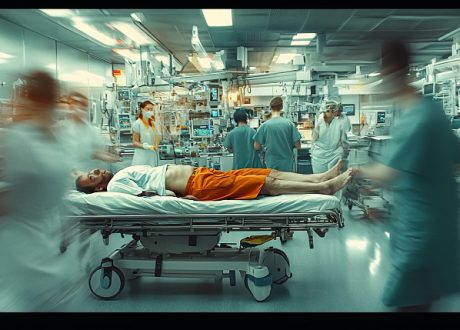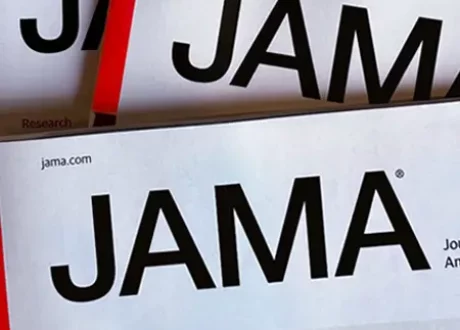Podcast: Play in new window | Download
Date: October 20th, 2021
Reference: Talan et al. Pathway with single-dose long-acting intravenous antibiotic reduces emergency department hospitalizations of patients with skin infections. AEM October 2021
Guest Skeptic: Dr. Lauren Westafer an Assistant Professor in the Department of Emergency Medicine at the University of Massachusetts Medical School – Baystate. She is the cofounder of FOAMcast and a pulmonary embolism and implementation science researcher. Dr. Westafer serves as the Social Media Editor and research methodology editor for Annals of Emergency Medicine. Lauren also recently won the SAEM FOAMed Excellence in Education Award.
Case: A 46-year-old male with a history of diabetes controlled on metformin presents with erythema and warmth to his right lower leg measuring 27 cm by 10 cm for the past four days. The patient is neurovascularly intact and there is no evidence of deep vein thrombosis (DVT) on ultrasound. He has no fever, and his white blood cell count is 12,500.
Background: Emergency department visits for skin and soft tissue infections (SSTI) are common and increasing [1]. These types of infections include cellulitis and abscesses. The SGEM has a couple of episodes on the treatment of cellulitis with antibiotics (SGEM#131 and SGEM#209).
 The treatment of abscesses has been covered a few more times on the SGEM (SGEM#13, SGEM#156, SGEM#164 and SGEM#311). The latest episode looked at the loop technique to drain uncomplicated abscesses. The result was no statistical difference in failure rates between the loop and standard packing. Our conclusion was to consider using the loop technique on your next uncomplicated abscess.
The treatment of abscesses has been covered a few more times on the SGEM (SGEM#13, SGEM#156, SGEM#164 and SGEM#311). The latest episode looked at the loop technique to drain uncomplicated abscesses. The result was no statistical difference in failure rates between the loop and standard packing. Our conclusion was to consider using the loop technique on your next uncomplicated abscess.
Most patients can be managed as outpatients. However, the average length of stay for inpatient care is one week and costs close to $5 billion dollars a year in the USA [2]. The mortality rate for hospitalized patients with SSTI is <0.05% [3, 4].
The only reason for in-patient management in 40% of patients was to provide parenteral antibiotics [5]. This has led to greater interest in long-acting parenteral antibiotics as a possible alternative to admission.
CLINICAL QUESTION: DOES THE USE OF A CLINICAL PATHWAY, INCLUDING A DOSE OF INTRAVENOUS DALBAVANCIN, IN EMERGENCY DEPARTMENT PATIENTS WITH SKIN AND SOFT TISSUE INFECTIONS REDUCE HOSPITALIZATIONS?
Reference: Talan et al. Pathway with single-dose long-acting intravenous antibiotic reduces emergency department hospitalizations of patients with skin infections. AEM October 2021
- Population: Patients ≥18 years old with abscess, cellulitis, or wound infection believed or confirmed to be due to gram-positive bacteria and an area of infection of at least 75 cm2.
- Excluded: Unstable comorbidity (e.g. severe sepsis), immunosuppression, injection drug use and fever, pregnancy, breastfeeding, bilateral lower extremity involvement, severe neurologic disorder, allergy to glycopeptide antibiotics, suspected gram negative infection or infection likely to need more intensive care or broad spectrum antibiotics, suspected osteomyelitis, septic arthritis, or endocarditis.
- Intervention: Clinical pathway included a single dose of intravenous (IV) dalbavancin
- 1500 mg (creatinine clearance ≥30 mL/min) or 1,125 mg for creatinine clearance <30 mL/min not on dialysis
- Telephone follow up call 24 hours after the visit and a follow up appointment 48-72 hours after discharge
- Comparison: Usual care pre-implementation of the new clinical pathway
- Outcome:
- Primary Outcome: Hospitalization rate at the time of initial care in the population that received at least one antibiotic dose
- Secondary Outcomes: Hospitalizations through 44 days, health resource utilization (length of stay, level of care, major surgical interventions, ICU admissions), adverse events, and patient-related outcomes (satisfaction, work productivity, and quality of life surveys at 14 days)
- Trial Design: Before-and-after observational study at eleven US academic affiliated emergency departments (EDs).

Dr. David Talan
This is an SGEMHOP episode which means we have the lead author on the show. Dr. Talan is considered an authority in acute infections that result in severe morbidity and death. He is currently on the faculty of the Department of Emergency Medicine, and Department of Medicine, Division of Infectious Diseases at UCLA Medical Center. Dr. Talan also serves on the editorial board of the Annals of Emergency Medicine.
Authors’ Conclusions: “Implementation of an ED SSTI clinical pathway for patient selection and follow-up that included use of a single-dose, long-acting IV antibiotic was associated with a significant reduction in hospitalization rate for stable patients with moderately severe infections.”
KEY RESULT: LESS PATIENTS WERE HOSPITALIZED AFTER THE IMPLEMENTATION OF THE NEW CLINICAL PATHWAY THAT INCLUDED A SINGLE-DOSE, LONG-ACTING IV ANTIBIOTIC.
- Primary Outcome: Hospitalization rate at the time of initial care
- 38.5% usual care vs 17.6% new pathway
- Absolute Difference 20.8% (95% CI; 10.4% to 31.2%)
- Secondary Outcome:
- Hospitalizations through 44 days: Absolute Difference 16.1% (95% CI; 4.9% to 27.4%)
- Length of Stay: 3.0 days (IQR 2.0 to 5.0) vs 2.0 days (IQR 1.0 to 4.0)
- Infection-Related Surgery: 0.6% vs. 3.3%
- ICU Admissions: 1.9% vs 0.7%
- Mild, Moderate and Severe AE: Were all more common in the new pathway group
- Deaths: None
- Patient-Related Outcomes; These were detailed in the supplemental material
SGEM BOTTOM LINE: IN HOSPITAL SYSTEMS WITH ACCESS TO IV DALBAVANCIN AND THE ABILITY TO ESTABLISH EXPEDITED TELEPHONE AND IN-PERSON FOLLOW UP, THIS CLINICAL PATHWAY IS ASSOCIATED WITH A DECREASE IN HOSPITALIZATIONS FOR PATIENTS WITH MODERATELY SEVERE CELLULITIS.









